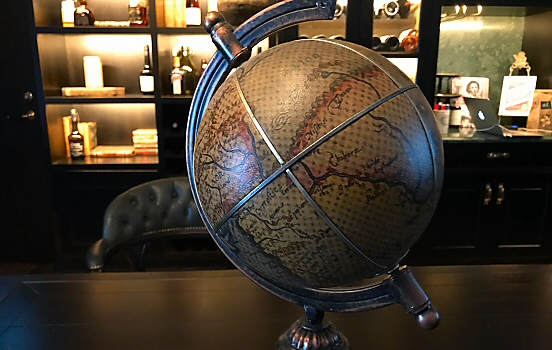The world of digital map mashups didn’t stop at the infamous projects HousingMaps (overlaying Craigslist on Google Maps) or Chicago crime map (combined crime data from the Chicago Police Department with Google Maps). It goes on and on with stuff such as Weatherbonk (collects weather and live traffic feeds on the map) and the “Where to go” travel map.
Placeopedia is a mashup using Google Maps, connecting cities with their Wikipedia entries. In other words, it’s sort of a geographical version of Wikipedia for the planet Earth. It’s still in a very early phase and there are lot of contenders, but it could be interesting to watch it grow.
If you prefer to tag areas instead of points, WikiMapia is an alternative. It allows users to tag map areas and write their own comments.
Google Maps has also added multiple destination points to their direction assistance tool. A very appreciated feature for most travel plans.
 Will these analog globes be a thing of the past?
Will these analog globes be a thing of the past?
If you are more into Google Earth I would recommend having a look at the recently added historical maps, where you can use layers of transparency on the overlaid maps to get a sense of how things have changed over the years. For instance, have a look at New York 1836 or Tokyo 1680. Interestingly enough, the 1790 globe is reasonably accurate, especially for Europe and the Mediterranean. Also, try to find Santa’s presents before December 24th.
You may use Flash Earth to compare 8 different online mapping services such as Google, Yahoo, Ask, MSN, NASA and OpenLayers. There is also a Virtual Earth counterpart called Map Cruncher, released by Microsoft.
Related posts
Comments
No comments yet.
Leave a reply